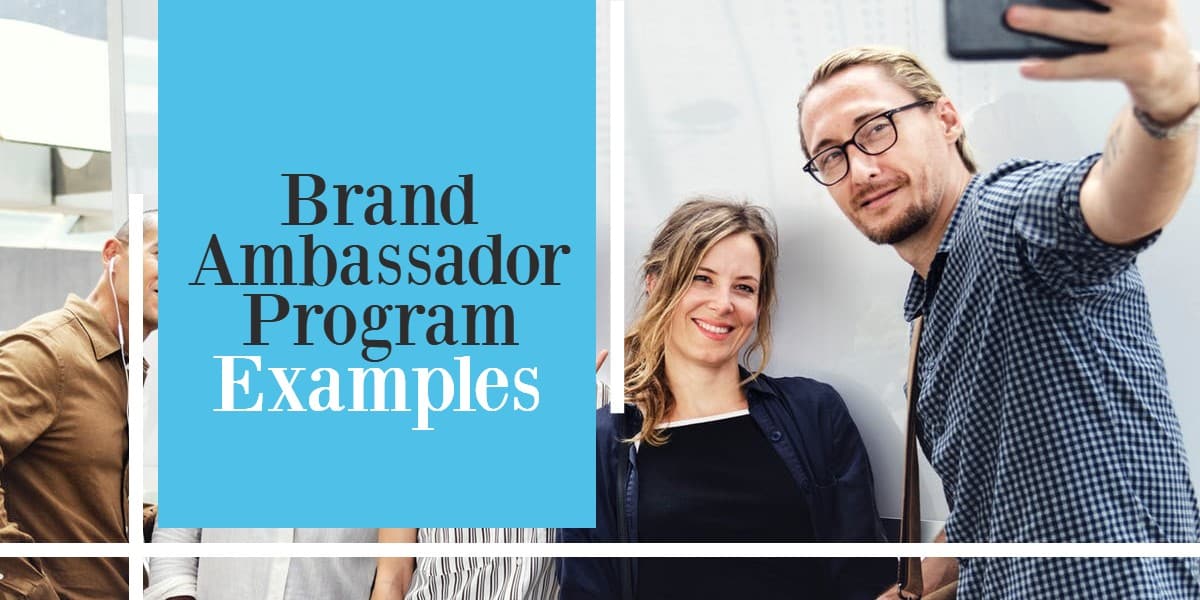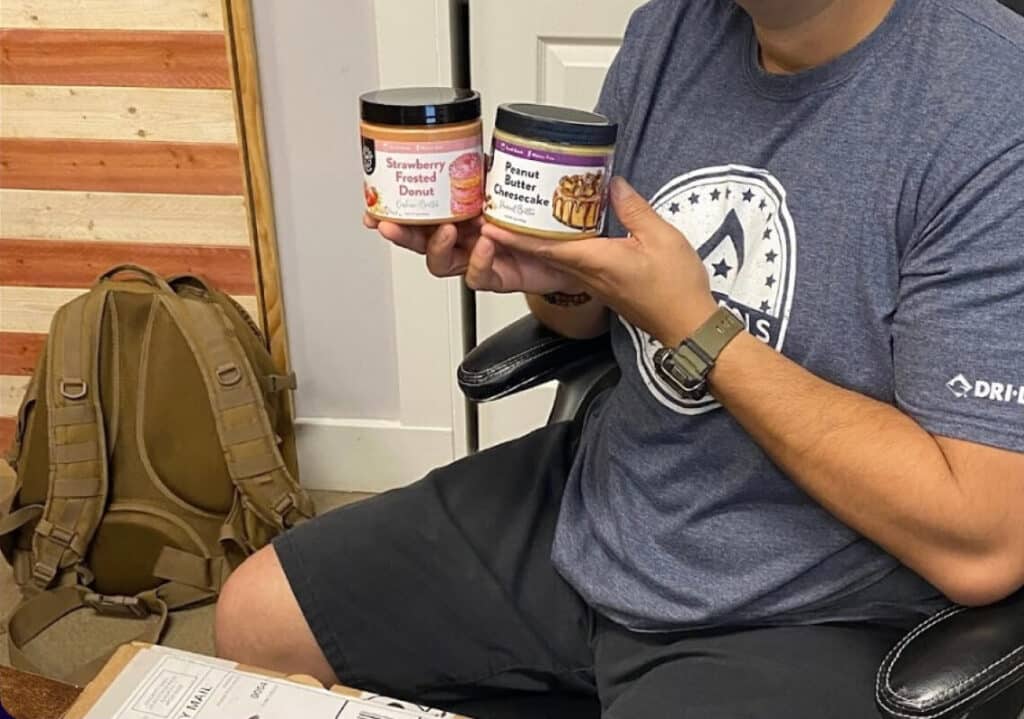Brand Ambassador Program Examples

We are in an e-commerce explosion, and when the average person spends almost two hours a day on social media, user-generated brand content is incredibly valuable.
Millennials are the most popular target group for marketers, and 95% of them think their friends are the most relevant source of information on new products.
Influencer marketing is the ultimate marketing buzzword, but brands are trending away from leveraging larger influencers in favor of micro and nano influencers.
This is why smart brands are tapping their brands biggest fans and converting them into brand ambassadors generating more than 20% of brand income.
The idea is to enable your brands biggest fans to promote your products in a natural and authentic way. Unlike influencers, brand ambassador generally already use your products, while influencer can promote your brand today, and your competition tomorrow. Additionally, consumers are catching on to the inauthenticity of brand promotions by mega influencers.
Another difference is in paying these groups. Influencer usually gets paid in cash, while brand ambassador will work for discounts, free products, and other brand-specific rewards.
Rewards don’t have to reduce margin, and smart brands are creating rewards that drive brand KPIs such as increased LTV, AOV and purchase frequently, along with using rewards to get rid of old inventory or get new inventory in the hands of their brand ambassadors to generate buzz. To learn more about creating rewards ambassadors love, and drive brand goals check out our guide.
A typical brand ambassador is a regular person with a regular person social reach, and in order to hit the same number of eyeballs as working with mega influencers, brands need to scale their ambassador program to hundreds or thousands of participants. This is where BrandChamp‘s ambassador marketing platform comes in.
The best way to show the impact of brand ambassador programs is to go through successful examples.
What is Brand Ambassador Program?
Millennials are almost three times more likely to go on social media for an opinion on the products they want to buy. Why not use this trend? Customers value word-of-mouth more than traditional ads and larger influencers.
These trends along with banner blindness and drop in brands organic reach on social media contribute to the rise of influencer marketing. It’s only natural that companies turn to their customers as promoters.
Successful brand ambassador programs should be made of people that are already interested in your company’s product and want to advocate it publicly. Brands converting satisfied customers into a brand ambassador are creating reliable and consistent referrals sales channels, with the most successful brands generating over 20% of total brand revenue from their ambassador marketing programs.
Brand ambassadors are promoters that their social media circle trust. Their social media friends or followers know that the person uses the product they support regularly and not only for the rewards from that brand.
Brands that have the most success with ambassador programs have these things in common:
- At least 1,000 customers. Too small of a customer base means you don’t have a deep enough pool to recruit from.
- A dedicated position for social and community building. Founders trying to manage their program and grow the business have a tough time.
- An authentic mission or ethos. Brand ambassador programs don’t work well for brands with transactional relationships like the typical drop shipper.
Top Brand Ambassadors Program Examples
Brand ambassador programs are not a new concept.
Red Bull employs athletes as ambassadors around the world. Adrenaline and X sports are in focus, and they are creating a story and experience around their products.
Red Bull is not a typical brand ambassador program because its ambassadors already have significant reach and get professional help in producing attractive content.
Another big brand that uses micro and middle influencers and their customers for promotion is Lululemon with more than 1,500 brand ambassadors. They are often focused on yoga instructors and fitness brand ambassadors, and Lululemon partners with them to bring in new Lululemon customers and cross promote the ambassador’s paid classes.
Your brand might not look like Lululemon or Redbull, but that doesn’t mean an ambassador program can’t contribute a meaningful amount of revenue. Here are a few BrandChamp customers succeeding with ambassador programs across several industries and company sizes.
Kaged Muscle Brand Ambassador Program Example
Health and wellness brands are still on the rise, and Kaged Muscle, the ultra-premium sports nutrition supplement line started in 2014 and with the help of BrandChamp manage to grow really fast.
KM marketing manager Nolan Heyer used to track their fitness brand ambassadors through a spreadsheet, which was not easy, to put it mildly.
The team decided to invest in ambassador management platform. After the first disappointing experience, second platform Kaged Muscle opted for was BrandChamp.
The results were great this time. Nolan could easily handle over 400 brand ambassadors that created 5,000 pieces of user-generated content contributing 5 figure a month of measurable referral sales.
After switching to BrandChamp Kaged Muscle saw:
- 10x more brand ambassadors
- Time spent managing ambassadors decreased by 70%
- Thousands of new customers
- More than 500 product reviews on 3rd party marketplaces
Skirt Sports Is a Great Example of a High Performing Brand Ambassador Program
The brand developed from an idea Nicole DeBoom had when she ran a marathon in the final leg of Ironman Wisconsin back in 2004. Nicole ran with a lightweight skirt of her own design.
Skirt Sports are very active with brand ambassadors and even created a unique line of products based on the opinion of the focus group. With customers being in the center of their promotional activities, using BrandChamp was a natural step forward.
SkirtSport community manager Noelle Wilson built their brand ambassador program hitting 3,371 social posts and almost 400 customer referrals in a single month. New customers acquired through their ambassador program spend hundreds of dollars annually.
SheShreds Brand Ambassador Program
Another woman clothing brand looked at BrandChamp as a solution for managing hundreds of ambassadors. Before implementation, SheShreds used spreadsheets and relied on the ambassadors to provide assistance to track the activity of marketing program.
They were hitting a wall with spreadsheets and weren’t able to scale their program to the size they needed to contribute a meaningful amount of total brand revenue.
After switching to BrandChamp SheShreds grew their ambassador program to hundreds of participants overnight.
BrandChamp’s integration with Shopify gave their marketing team real-time information on ambassador activities and actual sales generated through referrals.
SheShreds Brand Ambassador numbers with BrandChamp:
- 1,200 user-generated social media posts across Instagram, Facebook, Twitter & YouTube.
- More than 1,000 social media posts, comments, and shares
Inner Fire Brand Is Another Great Example Of A Successful Ambassador Program
When an eco-friendly clothing brand Inner Fire Apparel set the goal of growing the number of brand ambassadors to over 500, it was time for the software solution. With over 100+ brand ambassadors, the company team spent dozens of hours weekly updating spreadsheets, calculating rewards and sending notifications via email.
Another challenge was a lack of insight on metrics, and the impact the brand ambassador program had on marketing and sales.
Inner Fire integrated Brand Champ with their Amazon account and Shopify stores, which made the process of approval for new applicants much easier and enabled a real-time view into referral sales from each ambassador.
- 4000+ Social media posts
- 2,000 new social media followers
- 10+ blog posts featuring Inner Fire
Yoga People Brand Ambassador Program
Managing brand ambassadors is not only a challenge for eCommerce enterprises. Marketing agencies could benefit even more with a competent and all-around solution. A good example is Yoga people. Brand Champ co-founders owned one of the leading yoga marketing agencies.
One of the issues they had was managing brand ambassador programs manually and spending more than 30 hours monthly on running ambassadors, following their performance and issuing rewards.
Enough was enough, and the team convinced their customers to pay for the development work in exchange for a lifetime license for what would become Brand Champ.
Now brands can manage their end to end ambassador, influencer and affiliate marketing programs in one app with enterprise relationship marketing automation.
- Automate the application process
- Create activities that keeps participants engaged and promoting the brand over months and years
- Verifying activities across Facebook, YouTube, Instagram, and Twitter for creative and legal compliance in one click without leaving the app
- Auto issue rewards earned
Closing Thoughts On Ambassador Program Examples
Brands need to scale to contribute a meaningful amount of total brand revenue.
With an end-to-end solution like BrandChamp’s ambassador software tracking and managing, application becomes easy, and the same applies to track their social media or blog posts, rewards distribution and other managerial activities.
The result is scalable growth of the brand ambassador program, more time for core business activities and increase in organic marketing and most importantly, revenue.
| Company | Result |
| Kaged Muscle |
|
| Skirt Sports |
|
| SheShreds |
|
| Inner Fire |
|







